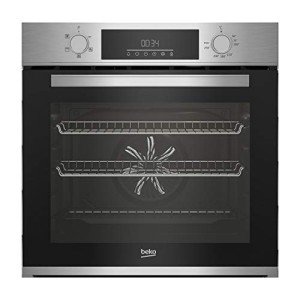5 Lessons You Can Learn From Single Built In Oven
페이지 정보
작성자 Floy 댓글 0건 조회 2회 작성일 25-06-17 21:29본문
The Comprehensive Guide to Single Built-In Ovens: Features, Benefits, and FAQs
Intro
In contemporary kitchen areas, the integration of home appliances is crucial to achieving a streamlined design. Amongst these devices, the built-in oven stands apart as a staple for everyday cooking. In specific, single built-in ovens are acquiring popularity due to their space-saving design and performance. This short article checks out the functions, advantages, and frequently asked questions about single built-in ovens, assisting house owners make notified options.
What is a Single Built-In Oven?
A single built-in oven is a cooking home appliance designed to be embedded within cabinetry, offering a smooth appearance that complements the kitchen's visual. Unlike freestanding ovens, built-in variants offer a series of features and designs that accommodate modern culinary needs.

Key Features of a Single Built-In Oven
Single built-in ovens featured a variety of features that boost performance and user experience. Here are some of the most important qualities:
| Feature | Description |
|---|---|
| Size and Capacity | Usually varies from 24 to 30 inches in width; ideal for various kitchen sizes. |
| Cooking Modes | Numerous settings, including convection, baking, broiling, and sometimes steam cooking. |
| Controls | Digital touch controls or traditional knobs with exact temperature settings. |
| Self-Cleaning Options | Lots of models consist of self-cleaning functions for easier upkeep. |
| Energy Efficiency | Designed to consume less energy, typically with an A+ energy ranking. |
| Security Features | Includes kid locks, cooling systems, and temperature level sensors. |
| Design Options | Readily available in numerous finishes (Hotpoint Stainless Steel Electric Fan Oven - Buy Now-steel, black, and so on) and designs (modern-day, timeless). |
Benefits of Using a Single Built-In Oven
The adoption of single built-in ovens provides numerous benefits:
- Aesthetics: They produce a contemporary and refined look in the kitchen, blending effortlessly with cabinetry.
- Space-Saving: Ideal for smaller sized kitchens, they are created to optimize area by being built into walls or cabinets.
- Increased Functionality: Many models feature innovative cooking technology such as smart functions that permit push-button control via smartphone.
- Easy to Use: With intuitive controls, built-in ovens are user-friendly and suitable for both newbie and experienced cooks.
- Improved Cooking Performance: Convection designs distribute hot air for even cooking outcomes.
Popular Brands and Models
Several brands control the single built-in oven market, each offering unique functions to cater to consumer choices. Here are some noteworthy ones:
| Brand | Popular Models | Key Features |
|---|---|---|
| Bosch | HBN8451UC, HBL8453UC | European style, convection heat, Wi-Fi connection. |
| Electrolux | E30SO75GPS, E30SO75PPS | Variations in size, advanced grilling abilities. |
| Samsung | NV51K6650SG | Double convection, smart technology, versatile cooking modes. |
| Whirlpool | WOS51EC0HS | Economical, dependable, self-cleaning functions. |
| LG | LWS3063ST | Smart innovation, air fry mode, smooth aesthetic appeals. |
Setup Considerations
Setting up a single built-in oven includes specific considerations:
- Measurement: Ensure that the area set aside works with the oven's dimensions.
- Ventilation: Adequate air flow needs to be preserved for security and effectiveness.
- Electrical Needs: Check voltage requirements and guarantee proper electrical outlets are offered.
- Expert Installation: While some property owners might choose DIY, working with a professional can mitigate installation problems.
Regularly Asked Questions (FAQs)
How much area is required for a built-in oven?

- A built-in oven generally needs a designated space that varies by design, normally from 24 to 30 inches in width. Always describe the producer's specifications for accurate measurements.
Can I set up a built-in oven by myself?
- While some might attempt a DIY setup, it is typically suggested to employ an expert to ensure correct fitting, electrical connections, and ventilation.
Are single built-in ovens more pricey than freestanding designs?
- Typically, yes. Single built-in ovens tend to cost more due to their design, installation, and extra functions.
What are the differences between convection and regular ovens?
- Stove have a fan that flows hot air throughout, leading to even cooking. Conventional ovens rely on convected heat, which might cause locations and irregular cooking.
What upkeep is needed for a built-in oven?
- Regular cleansing, guaranteeing vents stay unblocked, and monitoring functions. Numerous models offer self-cleaning alternatives, which streamline upkeep.
Single built-in ovens represent a merging of design, benefit, and performance in contemporary cooking areas. With a huge selection of features and designs available, these ovens deal with various cooking needs and preferences. Whether you are an aspiring chef or a periodic home cook, acquiring an appropriate single built-in oven can improve your cooking experience while raising your kitchen's visual. Cautious factor to consider of features, setup requirements, and upkeep will cause a gratifying investment in this essential kitchen appliance.
댓글목록
등록된 댓글이 없습니다.